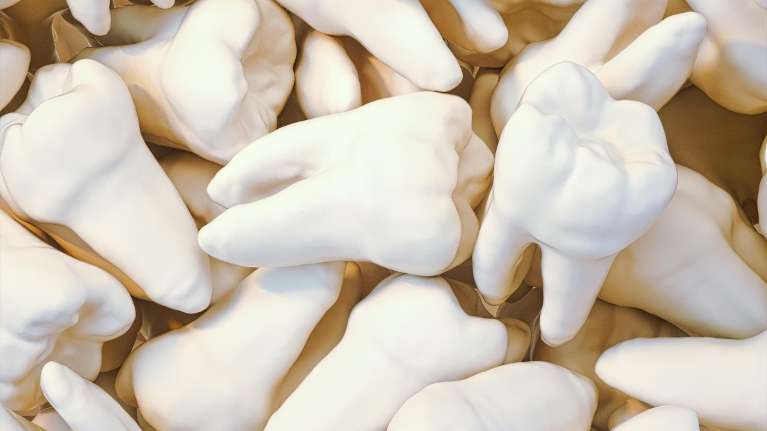
Remember those pesky wisdom teeth? Those late-blooming molars that often cause more trouble than they're worth? Well, it's time to bite the dust (figuratively, of course) and get the lowdown on their removal. Buckle up, because this guide is about to demystify the process and equip you with all the knowledge you need to conquer those third molars with confidence!
Before the procedure:
Consultation and Planning:
Pre-operative consultation: Your dentist will perform a thorough examination, including X-rays, to assess your wisdom teeth position, potential complications, and the best approach for removal.
Medical history review: Be prepared to discuss any medical conditions, allergies, and medications you're taking, as they may affect anesthesia choices.
Anesthesia options: Discuss with your dentist the different types of anesthesia available (local, general) and their pros/cons. Choose the option that best aligns with your comfort level and medical history.
Pre-operative instructions: Your dentist will provide specific instructions, including:
-
Eating and drinking restrictions: Usually, no food or drink 8-12 hours before surgery.
-
Medication adjustments: You may need to stop certain medications before the procedure.
-
Smoking cessation: Smoking can impede healing, so quitting beforehand is highly recommended.
-
Transportation arrangements: Arrange for someone to drive you home after the procedure, especially if under general anesthesia.
Preparing for the Day:
Wear comfortable clothing: Loose-fitting clothes will be easier to change into after surgery.
Gather supplies: Pack ice packs, gauze pads, and any necessary medications.
Relaxation techniques: Deep breathing, meditation, or listening to calming music can help manage anxiety.
Positive mindset: Remember, wisdom teeth removal is a common procedure with a high success rate. Focus on the long-term benefits of improved oral health.
During the procedure:
Prepping the Stage:
-
Positioning: You'll recline comfortably in a dental chair.
-
Anesthesia administration: Depending on your chosen option, you'll receive local anesthesia (numbing the area) or general anesthesia (putting you to sleep).
-
Monitoring: Throughout the procedure, your vital signs like heart rate and blood pressure will be monitored.
The Extraction:
-
Incisions: If necessary, your dentist will make small incisions in your gums to expose the wisdom teeth.
-
Loosening and removal: Using special tools, your dentist will carefully loosen the tooth and remove it from its socket. You may feel some pressure during this stage, but no pain.
-
Stitches (optional): Depending on the complexity of the removal, your dentist may close the incision with dissolving stitches.
Wrapping Up:
-
Gauze pad placement: A gauze pad will be placed over the extraction site to control bleeding.
-
Post-operative instructions: Your dentist will provide detailed instructions on managing pain, swelling, and proper oral hygiene during recovery.
Potential Variations:
-
Complexity: Depending on the position and impaction of your wisdom teeth, the extraction may take longer or require additional techniques.
-
Discomfort: While you shouldn't feel pain during the procedure, some pressure or pulling sensations are normal.
-
Bleeding: Minor bleeding is expected after the extraction, but your dentist will control it with gauze and medication if necessary.
Don't hesitate to ask questions or raise any concerns you may have before, during, or after the procedure.
Wisdom teeth removal may seem daunting, but the recovery phase is often smoother than imagined with proper care.
After the procedure:
Healing Timeline:
-
Day 1-3: Expect some pain, swelling, and discomfort around the extraction site. This is normal and usually peaks within the first 24-48 hours.
-
Day 4-7: Swelling and discomfort gradually decrease, and you should start feeling more comfortable.
-
Week 2-4: Most swelling and pain should be gone, but some soreness may linger. Healing continues for several weeks, and the bone completely fills in within 2-3 months.
Pain Management:
-
Prescription medication: Your dentist will likely prescribe pain medication to manage discomfort. Follow the dosage instructions carefully.
-
Over-the-counter options: Ibuprofen or acetaminophen can also help manage mild pain and swelling.
-
Cold therapy: Applying ice packs to your cheek near the extraction site can reduce swelling and pain.
Dietary and Activity Restrictions:
-
First 24 hours: Avoid hot liquids, alcohol, and smoking, which can dislodge the blood clot and increase bleeding.
-
Soft foods and liquids: Stick to soft foods like applesauce, yogurt, mashed potatoes, and smoothies for the first few days. Avoid hard, crunchy, or acidic foods that might irritate the extraction site.
-
Gentle activities: Avoid strenuous activities for the first 24-48 hours. Light walking or resting is recommended.
Post-operative Care:
-
Oral hygiene: Keep the extraction site clean by gently rinsing with warm salt water or an antiseptic mouthwash as directed by your dentist. Avoid vigorous brushing or spitting, which can dislodge the clot.
-
Follow-up appointments: Attend your scheduled follow-up appointments to monitor your healing and address any concerns.
Potential Complications:
-
Infection: While rare, infection can occur if the extraction site isn't kept clean. Look for signs like increased pain, swelling, fever, or pus discharge.
-
Dry socket: This occurs when the blood clot dislodges prematurely, causing pain and delayed healing. Symptoms include severe pain, a visible hole in the socket, and bad breath.
Following your dentist's instructions is crucial for a smooth and successful recovery.
Bonus Tip: Stock up on your favorite soft foods, ice packs, and comfortable clothes for the recovery period!
With proper care and understanding, you can navigate your wisdom teeth recovery with ease and look forward to a healthier smile.